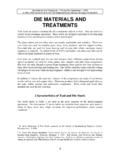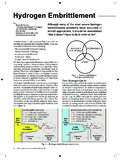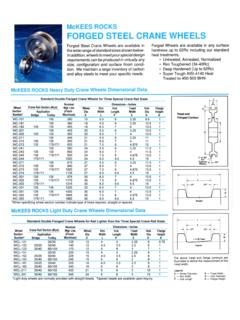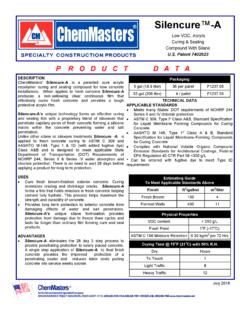Transcription of Disc Herniations: More Commonly Asked Questions and …
1 Disc Herniations: more Commonly Asked Questions and answers What is a disc herniation ? The vertebral disc is the pad that lies between the individual bones of the back and neck (called vertebrae). The normal disc typically consists of rings of cartilage around a jelly-like center, somewhat analogous to a jelly-filled doughnut. When some of the cartilage rings weaken, the strength of the wall of the disc in that area may be reduced. This situation can allow the jelly-like material to push out towards the weakened area of the disc wall, creating an out-pouching. This, in essence, is a disc herniation . What is the difference between a disc bulge and a disc herniation ? Disc herniation is a general term that can mean different things to different people.
2 It may refer to anything from a bulging of the disc to a break in the wall that allows the jelly-like material to protrude into the spinal canal. In our practice, we differentiate between a disc bulge and disc herniation . A disc bulge exists when the disc is compressed evenly, allowing it to bulge out equally on all sides; the disc looks "fat". With a bulge, there is no significant damage to the cartilage rings or jelly-like center. A disc herniation probably involves some tearing of the cartilage rings. A disc herniation can be divided into two major categories: protrusion and extrusion. A protrusion exists when only a few cartilage rings are torn and there is no actual leakage of the center material; the disc protrusion looks like a "bump".
3 With an extrusion, all the cartilage rings have torn in a small area, allowing the jelly-like material to flow out of the disc. What are the symptoms of a disc herniation ? Sometimes there are no symptoms from a disc herniation . If we took 10 people off the street that had no pain and looked at their spines with an MRI we would find at least three of them have a disc herniation . So, disc herniations may not cause any pain. more often, patients with a disc herniation experience some degree of low back or neck pain. If the herniation presses against a nerve root, the nerve can be irritated and cause pain in the arm (with a neck herniation ) or leg (with a low back herniation ). Patients often report that their pain may worsen or improve with certain body positions.
4 What is the cause of a disc herniation ? Studies have shown that some people are prone to disc herniations regardless of their job. Just as some of us are tall and others short, some of us have discs that aren't as strong as others. Unfortunately, there is no way we can test for the risk of disc herniation . Nevertheless, most often it is something we've done or that has happened to us that leads to a disc herniation . It may be lifting something, twisting our bodies or perhaps a car accident. Often, a herniation happens as a result of many small injuries over a lifetime, and a person just wakes up one morning and notices the pain. How is a disc herniation diagnosed? Many times, a physician skilled in diagnosing low back problems can hear your story and examine you to be reasonably certain that you have a disc herniation .
5 Some of the time, a CT scan or MRI scan of the neck or back will be needed to confirm the diagnosis, but frequently, the problem resolves before an MRI or CT scan is needed. What treatment options are available for a disc herniation ? The most important initial treatment for a patient with a disc herniation is pain control. Most often, Tylenol or anti-inflammatory medications, like ibuprofen (Motrin, Advil), naproxen (Naprosyn, Aleve), ketoprofen (Orudis KT), or Celebrex (Celecoxib) are used first. The second step is usually modification of activity. This doesn't mean bed rest, but probably means work restrictions. Sometimes, the right kind of exercise can decrease symptoms dramatically and physical therapy is started with therapists familiar with spine and disc-related problems.
6 Perhaps in 80 to 90 percent of cases, these measures (and 4 to 6 weeks time to heal) will do the trick. If these treatments fail, or the pain is bad enough, a patient may get the best relief with an epidural steroid injection. This involves placing anti-inflammatory medication in the back near the disc herniation . Sometimes, patients want to regard these treatments as a "temporary", but with disc herniations, there is no guaranteed "permanent" cure. Most of the pain comes from irritation of the nerve root, and helping your own body minimize that irritation is the goal of every treatment, even surgery. In some cases, pain and stress management counseling may be beneficial, particularly when it is affecting personal and professional relationships, lifestyle and recovery.
7 What is the role of surgery with regard to a disc herniation ? There are four definite reasons for surgery: 1. Progressive weakness in the arm or leg affected by the disc herniation 2. Inability to control urination or bowel movements, such as wetting or soiling clothing or being unable to urinate 3. Severe pain for greater than 3 months that significantly interferes with one's lifestyle. Otherwise, surgery is voluntary and is the last resort, considered only when all other treatments have failed. Why don't I just have surgery so I don't have to bother with exercise and injections? There is no guaranteed "cure" for a disc herniation , not even surgery, and no matter how effective, surgery will not prevent recurrences.
8 Up to 25% of surgically treated disc herniations re-herniate. Also, surgery has significant risks, so it is always the last choice in treating a disc herniation . When and if surgery is indicated, it is only the first step in a tough rehabilitation process. An exercise program with a spine physical therapist should be done before and after surgery. With the proper exercise program, you decrease the intensity and duration of future flares. What is the prognosis for patients with disc herniation ? 90% of patients with an initial disc herniation do well with an aggressive conservative treatment plan. Of the remaining 10% of patients, only a small percentage ever need surgery. The remainder of this group is left with a low level of pain that is quite manageable in their normal lifestyle.
9 70% of patients with leg pain will significantly improve following selective transforaminal x-ray guided epidural steroid injections. Other non-selective or non-x-ray guided epidural steroid injections will be less effective. What is my long-term outlook if I have a disc herniation ? Although aggressive conservative treatment plans are very effective, a patient who has exhibited a tendency towards disc herniation is always at a higher risk for episodes of low back pain. There are some jobs that require a significant amount of physical effort, and these jobs may not be best for a patient with a history of disc herniation . Nevertheless, many people go back to their regular jobs and hobbies without limitation.
10 Patients should use common sense and ease into more strenuous activities. A patient can help reduce the risk of future low back or neck problems by regular home exercise program as designed by your physical therapist and spine physician. Please see the following articles for more information: "Lumbar Disc Disease", "Radiculaopathy"







